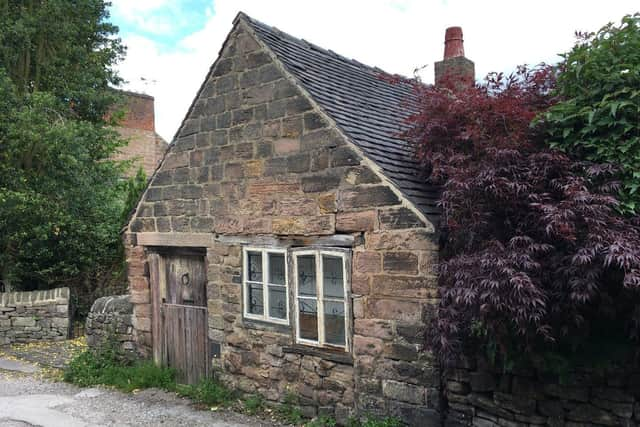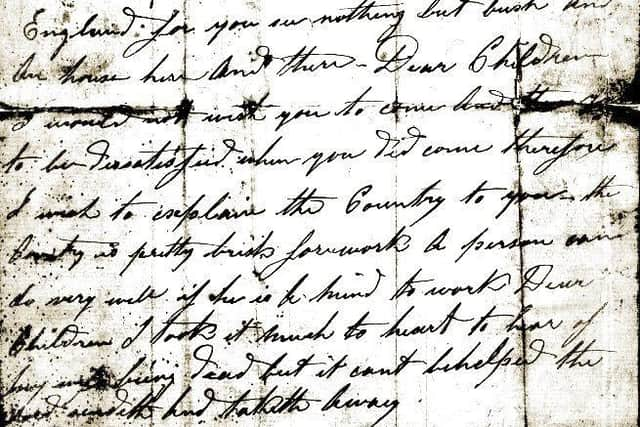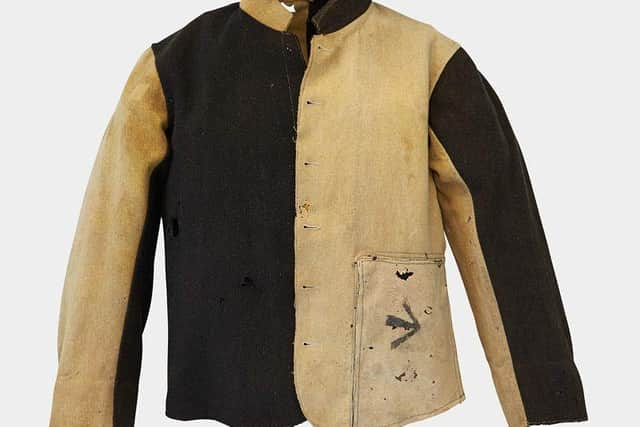Remembering Abraham Jennison - Derbyshire convict transported to Australia
and live on Freeview channel 276
Born into poverty in Belper in 1804 as the first of five children to a humble nail-maker and his wife, Abraham Jennison grew up to emulate his father. Although began learning his trade under his father's supervision before the age of 10, Abraham was tutored at home in his spare time by his mother, not realising at the time that his writing skills he was learning would lead to some of his words being read time and again, not just by his nine surviving children but by historians, scholars and the general public alike over a century later.
My research into his life motivated me to write his biography, a task which came to fruition with publication in March of this year. His life spanned the Napoleonic war, Early Victorian Britain and Dickensian London, so it was nothing less than eventful throughout. In 1825 he wed a local girl in a marriage that would produce eleven children, but the acceleration of the Industrial Revolution forced hand-made nail-making into a steep decline, and with it, the Jennison's fortunes.
Advertisement
Hide AdAdvertisement
Hide AdAbraham resorted to poaching in order to feed his expanding family, but this soon proved insufficient with a wife and eleven children. his felonious activities escalated, and in 1848 at the age of 44 Abraham was one of a trio of local rogues who were apprehended during the attempted theft of a pig from John Bilbie at the premises of 'The Green Man' public house in the nearby village of Heage. Their exploits had dire consequences for the entire Jennison family when all three were subsequently convicted at the Derbyshire Assizes in July of the same year with each receiving a 7-year transportation sentence.


Abraham spent the first three years of his incarceration in his own country, initially at Vernon Gate Prison in Derby, followed by the appalling conditions at Millbank Prison in London (on the site now occupied by the Tate Gallery), and later on the notorious floating York hulk moored at Gosport near Portsmouth. Most of the prisoners transported to Australia in the nineteenth century passed through Millbank Prison thus becoming the original 'POM's' (Prisoners of Millbank).
In March of 1851 Abraham was finally forced aboard the new convict transport ship the 'Pyrenees', shackled to another 295 prisoners who were condemned to similar punishment.
The 3-month voyage turned out to be a perilous experience for Abraham, not only suffering from prolonged seasickness throughout the passage, but also being confined to the ship's sick bay for over two months with a serious remittent fever after collapsing while swabbing the upper deck. His treatment under the direction of the ship's 'Surgeon Superintendent' A.C. Macleroy proved to be no less traumatic. Abraham was subjected to bloodletting, powerful laxatives, induce blistering to his head and the application of mustard plasters to his legs and abdomen. Leeches where considered too expensive and an unaffordable luxury for the likes of convicts, so the bloodletting had to be achieved by more primitive methods.
Advertisement
Hide AdAdvertisement
Hide AdAfter mooring in the bay at Fremantle W.A., Abraham had to wait six days before being transferred to a makeshift hospital at the Swan River Penal Colony. Conditions at Fremantle were shambolic and some of the other prisoners had to wait almost three weeks before disembarking. Convict transports to Western Australia had begun 12 months earlier and the 'Pyrenees' was only the fourth ship to arrive at that destination with a cargo of prisoners. There was no spare capacity in the existing prison so the prisoners had to be confined in disused warehouses and were immediately set to work building their own new prison, a project that would not be completed until 1859.


Abraham was issued with a 'ticket-of-leave' on arrival, which meant that once he had recovered from his illness he could seek independent employment with the other settlers who had begun arriving some twenty years earlier in 1829. He was still a convict, so there were strict limitations to his new found 'freedom' - he could not leave the colony, work on ships, own or carry firearms and he had to produce his 'ticket-of-leave' to verify his status whenever challenged. He also had to report to the local magistrate on a monthly basis.
Eventually he relocated to one of several convict hiring depots in the region, at Lynton to the north of Fremantle. Despite receiving a further conviction for absconding, Abraham was awarded a Conditional Pardon in 1854 and a Full Pardon in 1855, but this left him free to do what?
By the time he wrote his letter in 1861 Abraham had settled into permanent employment at the Tibradden homestead of John Sydney Davis. His words confirm he was hoping to reunite with one of his sons Thomas at Tibradden, but Thomas never travelled.
Advertisement
Hide AdAdvertisement
Hide AdAbraham never returned home and he died alone, shortly before his 66th birthday in 1870. His fateful attempt to steal a pig to feed his family in 1848 meant that he was unable to attend the nine marriages of his children, the funerals of his eighteen-year-old daughter Hannah and wife Ann, and he would never meet any of almost nine dozen grandchildren.The homestead at Tibradden became the first Western Australian structure to be included on the Australian National Heritage List and was afforded UNESCO World Heritage status in 2010. An archaeological investigation in 2010 undertaken by Jayden van Beek, a student at the University of Western Australia, revealed the existence of the original blacksmith shop that Abraham would have toiled. Abraham's former home at North Terrace in Belper is also still used for residential purposes.


Other contributors to Abraham's biography include Royal Museums, Greenwich, V&A Museum, W.A. Museum, Fremantle Prison Museum and Australian National Maritime Museum.
Anyone interested can purchase a copy of the book (Abraham Jennison - Convict 442) at The Bookcase in Lowdham or online at nottinghambooks.co.uk. Price £14.00.